Case study: researching employee experience
This case study describes a research project conducted by the international design and consulting company USECON in order to investigate its internal employee experience.
About the company

USECON is an internationally operating design and consulting company headquartered in Vienna. It consults on any activities around user-oriented design of interactive systems and services with a positive user experience. The user’s needs and expectations are always in the center of USECON’s attention. The approach focuses on three 3 Us – Usability, User Experience and User Interface Design. USECON has an experience background with over 1,000 successfully conducted projects and more than 500 satisfied customers in its disposal within an international area.
Problem statement and goal
Employee experience (EX) – the experiences of staff at their working place or during their working process – is increasingly important for USECON. ExperienceFellow* was considered as the ideal instrument for researching employee experience. During an internal project the tool was evaluated for the following reasons:
- Pilot study for internally testing ExperienceFellow* for future usage with USECON clients
- Analysis of internal employee experience for it’s future improvement
- Creation of knowledge and practical experiences for the usage of the tool from both views of the company as well as the users
With the aim to focus on the subject of employee experience, the design and consulting company USECON aimed to exploit a new business section within its service portfolio in 2016. As employee experience had been assessed as a central part of the company, it was supposed to perfectly replenish with the current service portfolio in the future.
We often talk about user or customer experience. But an elementary part of the company is missing – the employee experience. Satisfied and motivated employees build the main base for a company’s success. In the field of experience management it is believed that the employees of a company are in fact the most important interface, or expressed differently: the most important touchpoint – between the customer and the company.
Markus Murtinger, Director Consulting, Sales & Marketing, USECON
Goal of the study
The ultimate goal of this study was to test the implementation of ExperienceFellow* as a software tool as an extension of USECON’s service portfolio. The exposure of positive and negative experiences at USECON enabled the company to take several measures in order to improve the employee satisfaction and to align respected internal company structures. After this pilot project, USECON plans to implement ExperienceFellow* in suitable client projects in the future.
Project set up
The study framework was determined during the preparation phase of the project: the process to be evaluated as well as the amount and selection of the participants had been defined.
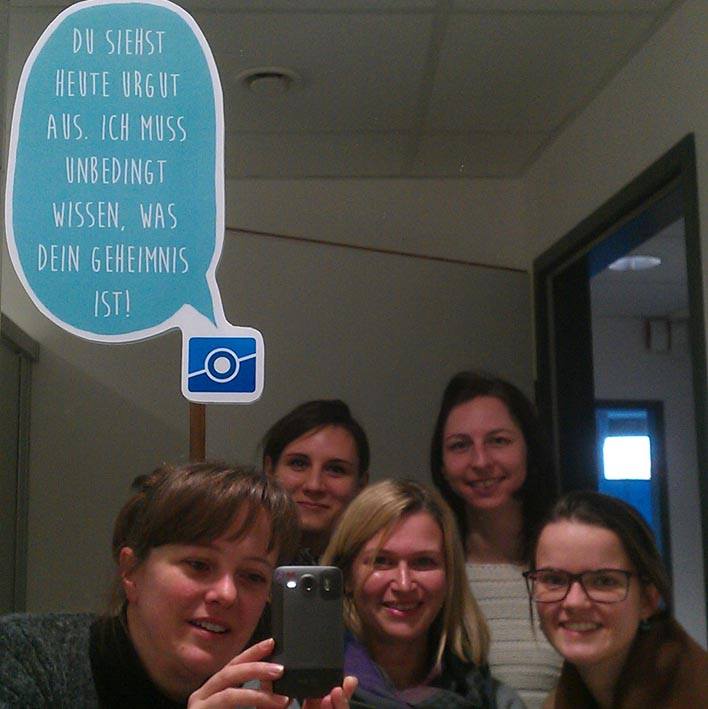
This was followed up by the technical preparation phase, in which the participations received the study instructions including the QR-Code via Email. In the final step of the project set up, participants installed the ExperienceFellow* mobile app on their mobile work phones, or on their private phone.
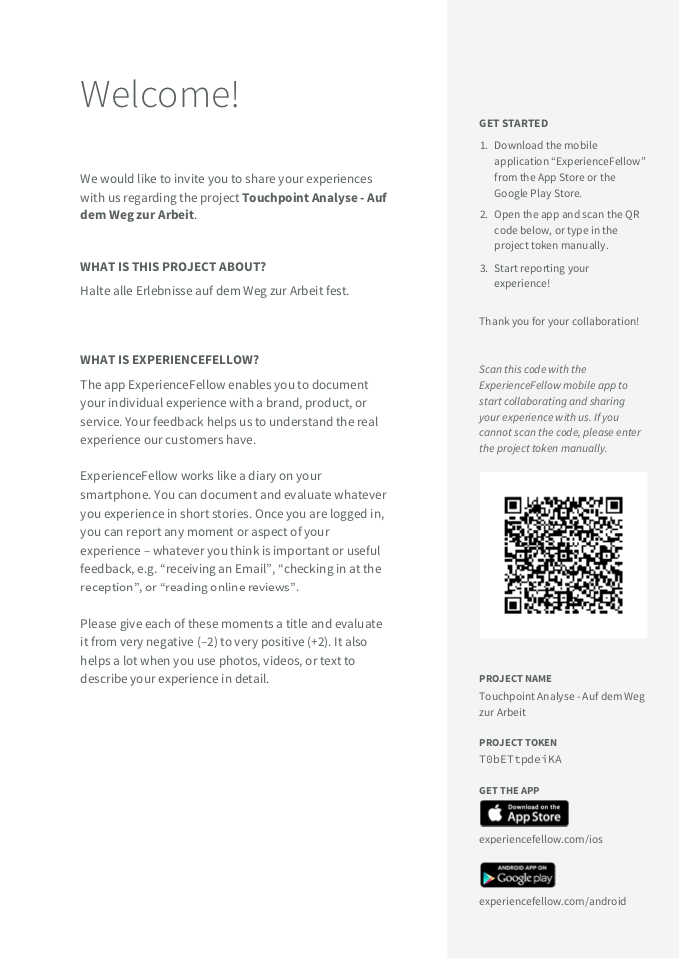
By usage of creativity and empathy, USECON pays attention to its employees’ interests.
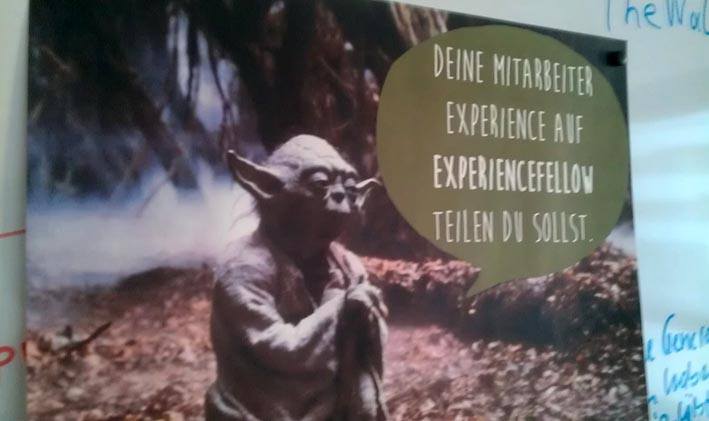
Also free coffee and some sweet compliments were used as an incentive to get employees to use the tool regularly.

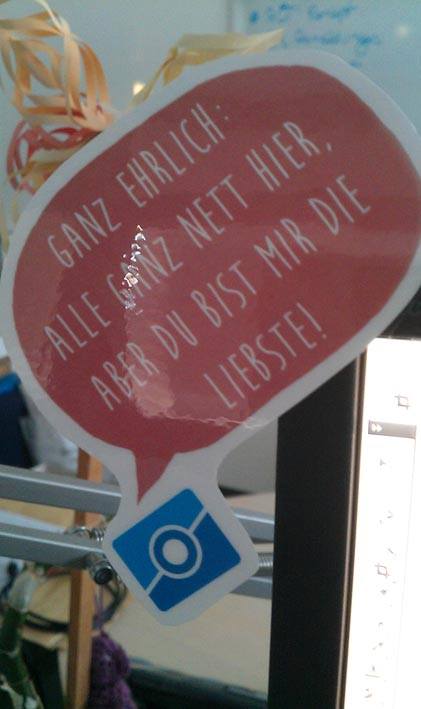
Data collection
Participants were asked to record individual relevant touchpoints at least once to twice a day over the planned data collection period of three weeks (7th to 28th January 2016).
To motivate employees to take part in this voluntary study, USECON set up a raffle as an incentive, which could only be won by study participants.
To remind participants of the steady creation of touchpoints and as a task of motivation, USECON spread oversized stickers as “friendly reminders” everywhere in USECON’s headquarter. With the usage of slogans like “Do you want to tell me how you are doing today over a cup of coffee?”, placed on neuralgic spots such as the printer or in the bathroom, employees called their task back into their minds to reflect on previous experiences of the days and to record relevant touchpoints via the ExperienceFellow* mobile app.
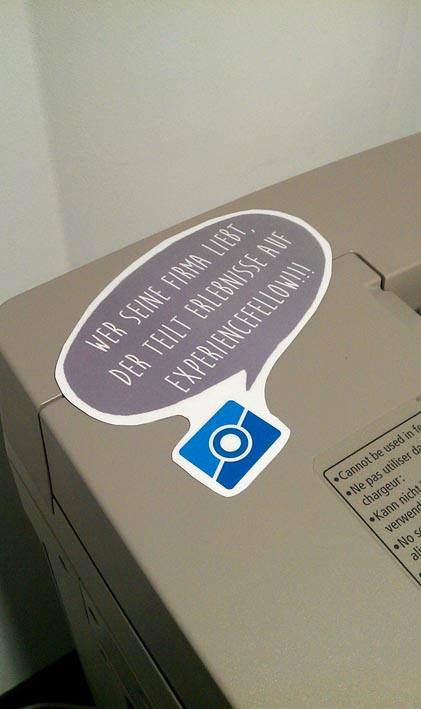
Data analysis
Most of the USECON staff that was present during the time mentioned participated in the project. All together 14 USECON employees took part in the study of which 10 were male and 4 female. The shortest of all employee journeys consisted of one, the longest of 46 touchpoints. After the adjustment of the total of 178 touchpoints (not interpretable, or double recorded data), 92 highly qualitative touchpoints remained for further evaluation.
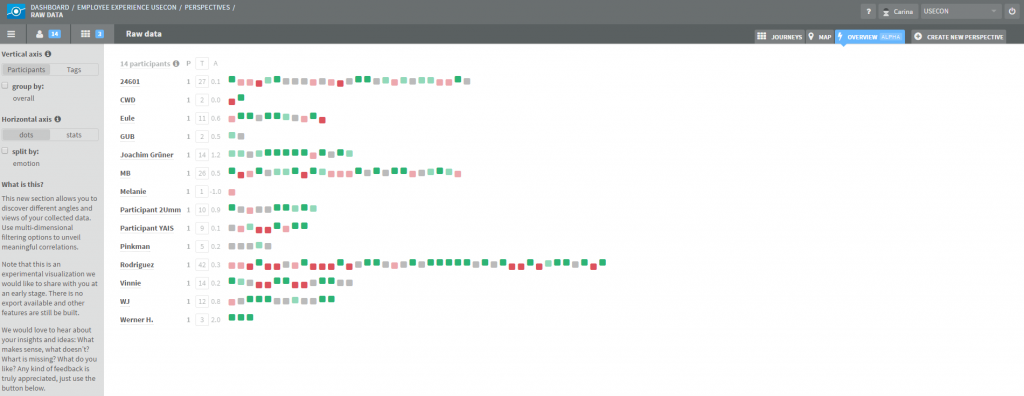
Every touchpoint included at least a title as well as an emotional satisfaction assessment ranging from very negative (-2) to very positive (+2). Beyond, participants had the possibility to add detailed descriptions of the situation as well as pictures. The average emotion of all participants could be interpreted as positive with a mean value of 0.52. Under distinction of both genders, female participants experienced their touchpoints less positive with an average emotion of -0.02 than male participants with an average emotion of 0,68.
To secure as broad insights into the employee’s working day as possible, USECON didn’t define any tags in advance. The ultimate goal was to benefit through the renouncement of tags in order to receive the employee experience free from external influence. Afterwards, the documented touchpoints had been related to categorically different tags in the context of evaluation. For instance, touchpoints concerning colleagues, work content, organization, knowledge transfer, collaboration or customers contact have been distinguished. Based on these tags, the results were categorically selected, evaluated and compared.
The collected data was analyzed from different points of view, grouped and discussed. Every new perspective brought new findings. The respected evaluation was conducted by an employee of USECON, who has the overall responsibility for the project process and who has long lasting professional experience in the fields of experience tools, online surveys as well as data analysis and statistical evaluations. During the organization and evaluation process, she received support from an additional employee.
Main findings and implementation
Due to the amount of emotional categorization as well as the detailed touchpoint descriptions written by the participants, both positive and negative employee experiences were recorded.
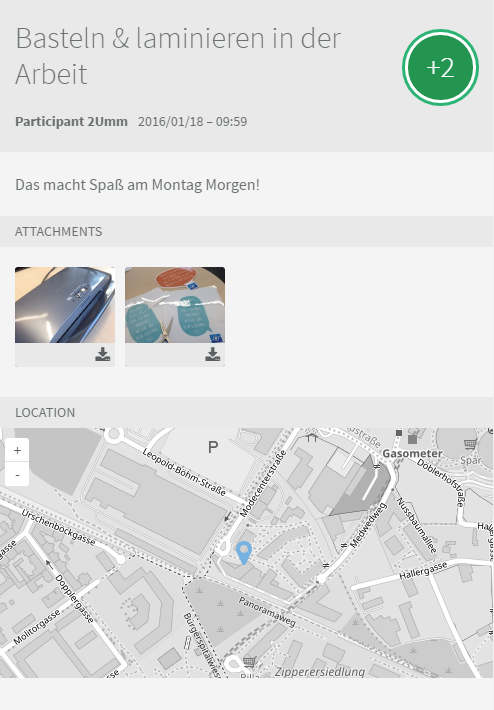
Employees especially appreciated the collegial team spirit as well as personal and work-related exchange in a positive way. Lunch breaks that are spent together and company internal benefits like fresh fruit and coffee received a highly positive emotional experience. Beyond, the majority of employees valued creative tasks as well as the high diversity due to very versatile projects. However staff perceived knowledge transfer within the company and the lack of standardization of general material templates as challenges when working for USECON.

The previous described insights lead USECON to take internal measures in order to actively react to the gathered study results. The overall aim has been to increase the amount of positive touchpoints and reduce the appearance of negative touchpoints in the long run.
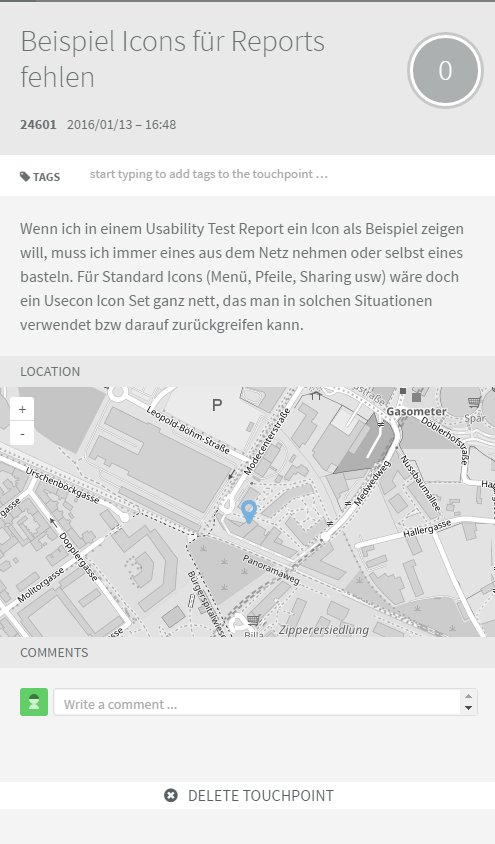
Since the study results had been assessed, USECON paid additional attention to enable interpersonal exchange between employees. Lunch breaks are no more just the intake of food but rather consciously instructed as joint cooking experience.

Beyond, USECON has aimed for further increasing internal dynamic structures. To stabilize the knowledge management sustainably and in order to keep valuable information efficiently in the company, a longstanding employee of USECON has been tasked with the respected responsibility.
Since then, he’s been in charge to encourage the team when it comes to internal communication, promote the exchange of information and ensure an integral transfer and assurance of knowledge in case of fluctuation.
Due to those measures taken, USECON was able to noticeably improve its internal knowledge transfer and now benefits in a long-lasting way of the gathered employee insights by steadily running implementation within the company culture.
Because of the positive experiences gained from this study, USECON aims to also integrate the ExperienceFellow* tool in suitable external projects for data collection.
Conclusion
The research project enabled USECON to sustainably improve its employee experience and respectively align their company culture. Due to the employment of ExperienceFellow* in order to investigate positive and negative experiences at the work place, USECON could react to critical touchpoints and based on those insights take measures for the improvement of its employee satisfaction.
Fact box
Aim of the project: Survey of employee experience at USECON as well as internal pilot project with the intention to extend the service portfolio of the company.
Project duration: 3 working weeks
Acquistion of the participants: Placement of oversize stickers spreaded in the whole business building.
Incentive for participation: Raffle with a lunch by own choice to win.
Total amount of participants: 14
Amount of collected touchpoints: 178
Amount of touchpoints per participant: 1-46
( * ) This case study refers to our mobile ethnography tool called ExperienceFellow which is not available anymore. For further information drop us a line at mail@smaply.com











